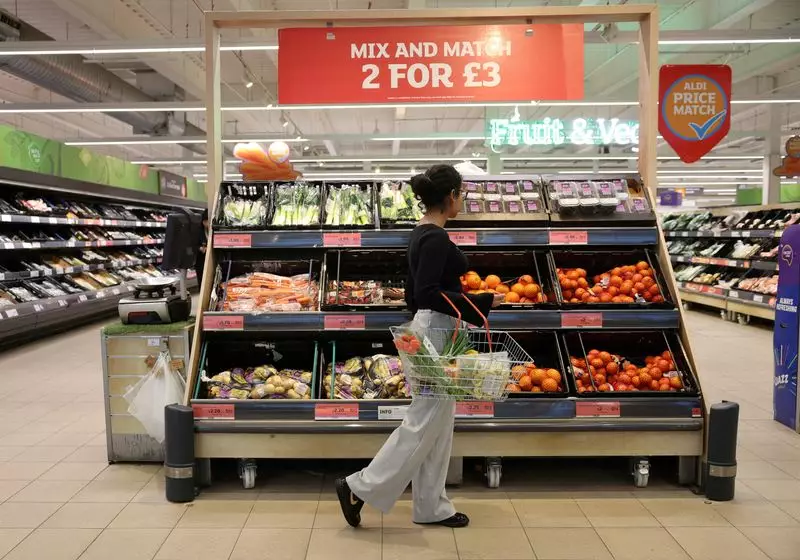In recent times, Britain’s retail giants have found themselves amidst a whirlwind of economic challenges. Major players like Tesco, Sainsbury’s, Marks & Spencer (M&S), and Next are being forced to adapt to rising operational costs and consumer price sensitivity. The challenge presented by inflation and increased taxation has prompted these retailers to rethink their strategies, ultimately accelerating their transition toward automation and operational efficiencies. As the nation’s economy grapples with stagnation, the new Labour government’s sweeping reforms, particularly a hike in employer taxes, have raised eyebrows and invoked criticism from the business world.
Amidst these structural changes, retailers are forecasting substantial increases in costs due to social security payments, minimum wage rises, and packaging levies. It is estimated that these combined factors could impose an additional burden of £7 billion annually on the sector. The grim predictions have been reflected in the stock prices of retail companies, which plummeted sharply, creating ripple effects across the broader financial environment, including rising government borrowing costs.
While larger retailers tend to have a cushion of previous profits that allows them to navigate these choppy waters with a measure of resilience, smaller establishments have not been as fortunate. Recent statements from Next illustrate the challenges faced by retailers as they grapple with rising wage costs; an estimated £67 million increase in the coming years is anticipated. Nonetheless, Next remains optimistic about profit growth, asserting that price hikes of about 1% can mitigate rising costs. The company aims to bolster productivity across its supply chains and operational systems to optimize efficiencies further.
Simon Wolfson, CEO of Next, envisions that the future of retail is tied to automation. His perspective aligns with a growing industry trend: as labor costs rise due to enhanced national insurance contributions, retailers will increasingly turn to mechanization and AI solutions. Wolfson remarks, “With any mechanisation project you’re always looking at a pay-back,” indicating that savvy retailers will contrast savings against the costs of implementing new technologies. As the economic landscape tightens, this approach may become not only prudent but essential.
Greggs, a prominent food chain, has already embraced this paradigm by launching a highly automated production line at its Newcastle facility. This move promises to increase output significantly, allowing the chain to serve millions more products weekly at a time when consumers seek convenience. Tesco, the largest supermarket chain in the UK, mirrors this trend with plans for a robotic chilled distribution center in Aylesford. Additionally, Sainsbury’s is innovating by promoting its SmartShop technology, which offers customers the chance to scan and pay for their own purchases, reducing labor costs.
Despite Tesco anticipating a £250 million annual impact from increased employer national insurance contributions, CEO Ken Murphy expresses confidence in the company’s ability to adapt. Tesco has effectively weathered significant challenges over the past few years, including the COVID pandemic, highlighting its resilience and adeptness in finding savings in times of cost inflation. The company’s “Save to Invest” initiative aims to deliver substantial savings, identifying efficiencies in logistics, procurement, and waste reduction.
In stark contrast, smaller retailers are facing an uphill battle. Findings from a British Chambers of Commerce survey reveal that over half of the smaller businesses anticipate raising prices, likely exacerbating inflationary pressures. For many of these smaller players, rising costs may lead to drastic measures, including downsizing operations or shuttering locations altogether. For example, budget retailer Shoe Zone has signaled impending store closures due to the untenable nature of the increased costs.
Market analysts emphasize that the ability to weather the economic storm varies greatly within the sector. Brands like M&S, undergoing a transformative turnaround, project that their capable management and favorable product offerings will help navigate the complexities of rising costs effectively. Investors remain optimistic about M&S’s potential to maintain stability amidst the turmoil, attributing its success to quality offerings that resonate with consumers.
The retail sector in the UK is undeniably at a critical juncture; as inflation rises and operational costs climb, retailers are being forced to rethink long-established operational models. The prevalent adoption of automation technologies stands out as a crucial maneuver to enhance efficiency and sustain profitability. Nevertheless, the disparity between robust retailers and their more vulnerable counterparts highlights a significant challenge within the industry. The true impact of these economic pressures will unfold in the months to come, as retailers bravely push towards a more automated and efficient future under the weight of inevitable change.

